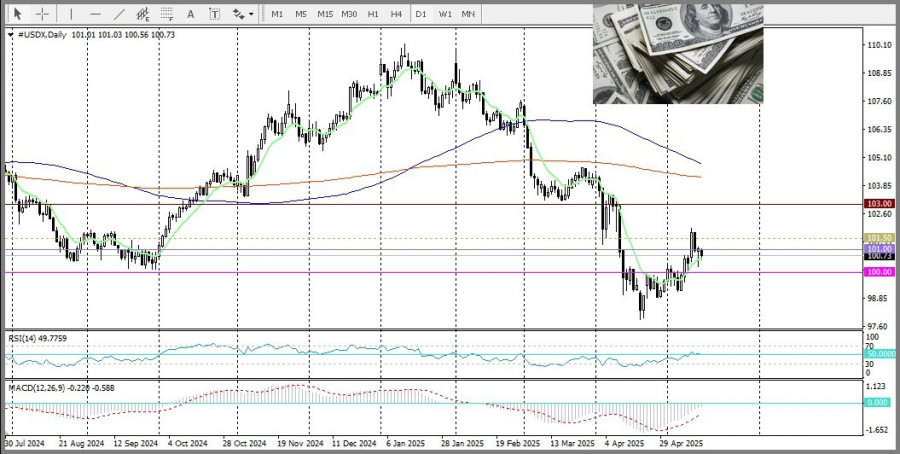See also


 15.05.2025 07:17 PM
15.05.2025 07:17 PMGold is attempting to stay above its 50-period Simple Moving Average (SMA). However, optimism sparked by the de-escalation of the U.S.–China trade war — involving the world's two largest economies — has failed to support the metal. Progress in trade negotiations is reducing global economic risks, which in turn is weighing on demand for the yellow metal. A shift in global risk sentiment, reflected in the notable decline in equity markets, has also not provided any meaningful support for gold. Investors often turn to gold as a safe-haven asset during periods of market uncertainty.
The U.S. dollar is also struggling to attract significant buying interest, as traders await today's U.S. Producer Price Index (PPI) report and a speech by Federal Reserve Chair Jerome Powell. Easing fears of a U.S. recession have tempered expectations of aggressive monetary policy easing by the Fed, keeping gold pinned near its monthly lows. Before confirming that the recent pullback has ended, traders are advised to wait for new buy signals.Technical Outlook
From a technical perspective, yesterday's break below the psychological $3200 level and the subsequent decline may serve as a fresh trigger for bearish sentiment. Furthermore, daily chart oscillators have only just begun to shift into negative territory, suggesting that the price may continue to fall toward the next key round-number support at $3100.
On the other hand, any recovery attempt above the $3170 level is likely to face stiff resistance near the $3200 level. Further upside moves should be viewed cautiously as selling opportunities, with momentum likely to stall near $3230. This level is critical — a breakout above it could trigger short-covering, driving gold prices toward the next barrier at $3265 and potentially on to the psychological $3300 level.
You have already liked this post today
*The market analysis posted here is meant to increase your awareness, but not to give instructions to make a trade.


